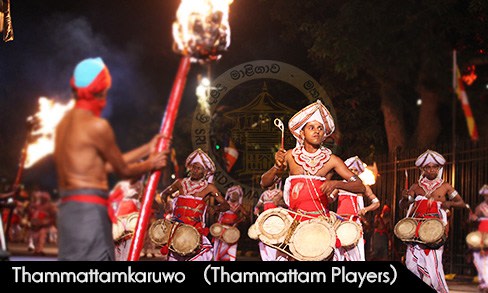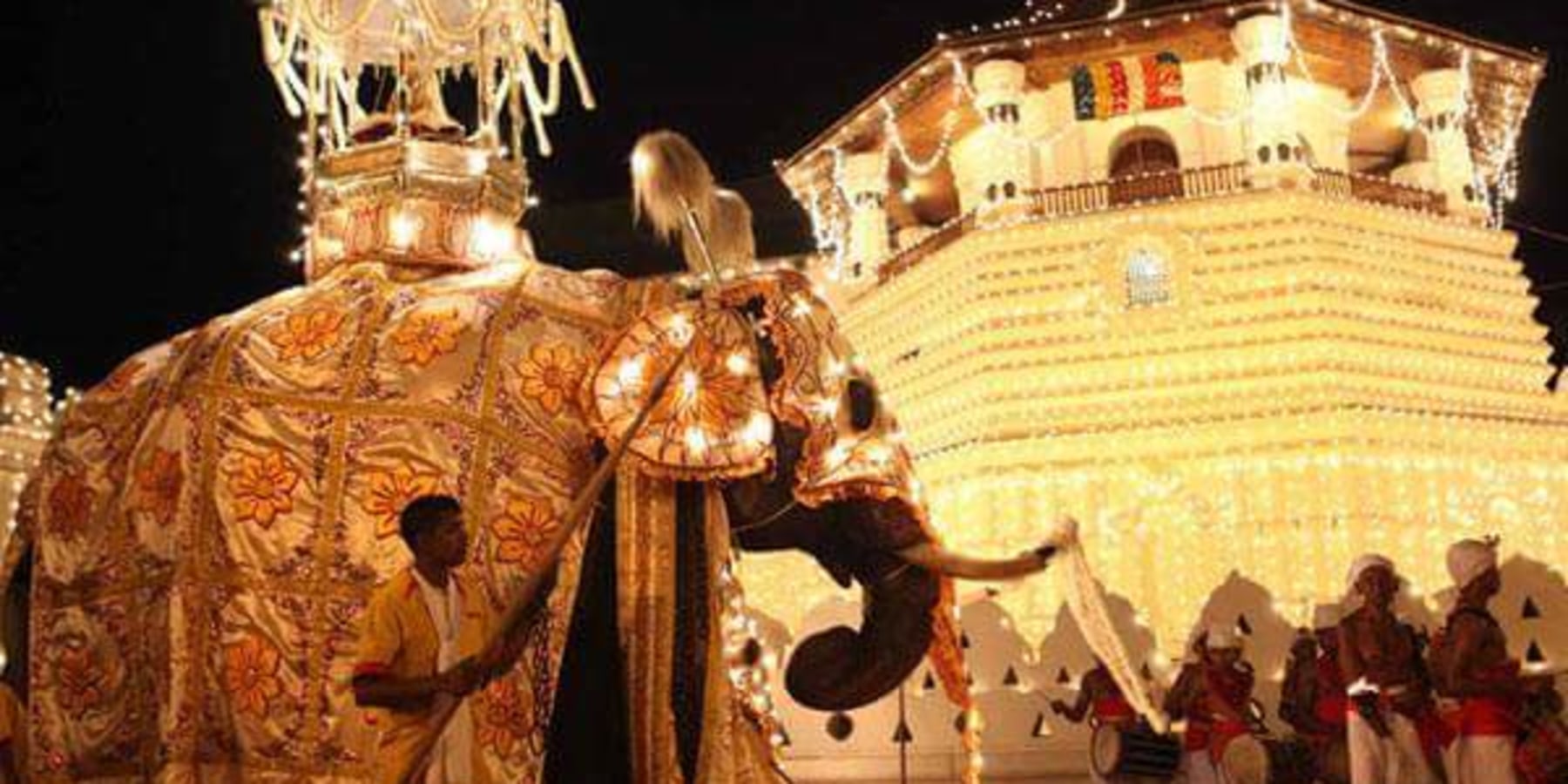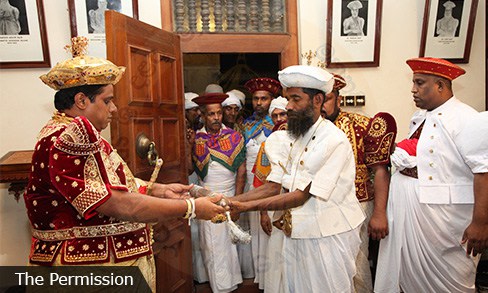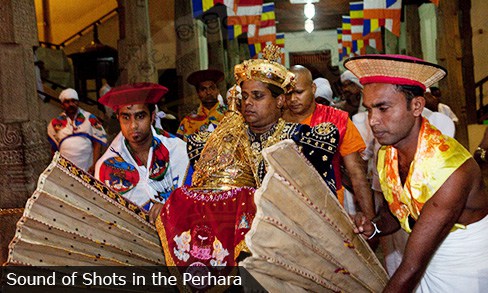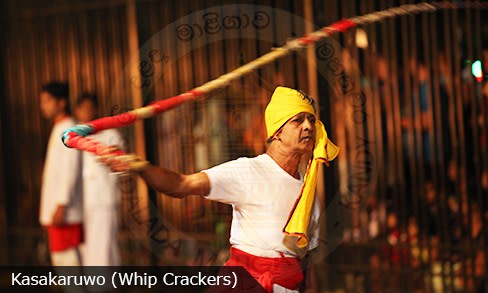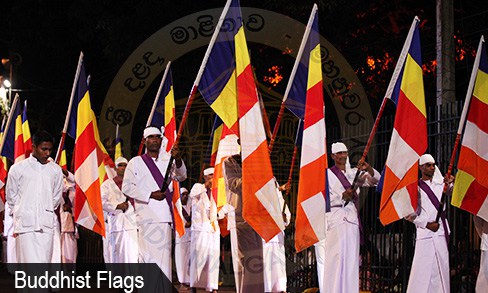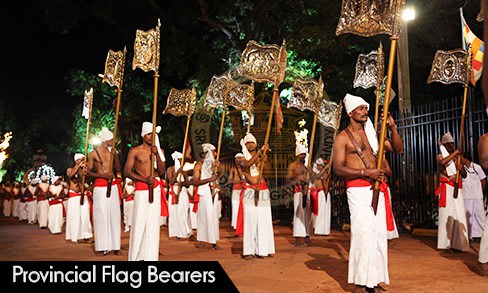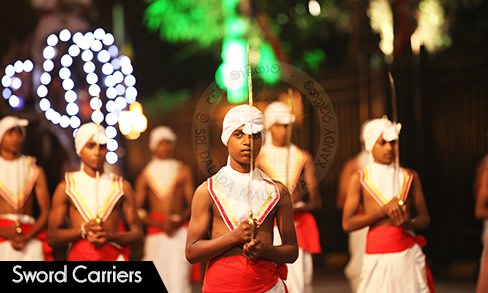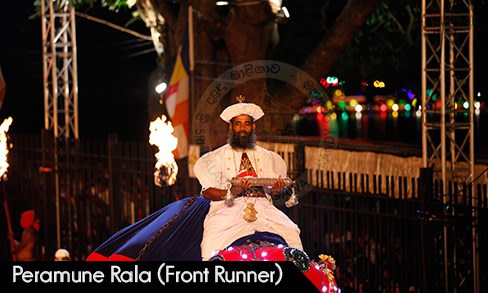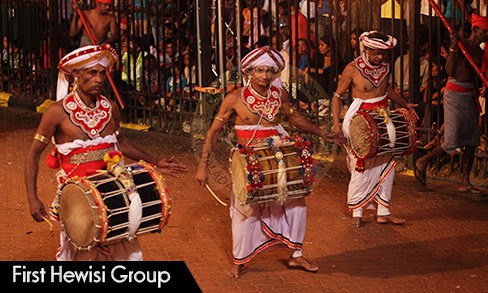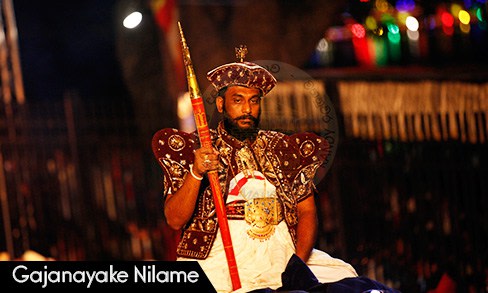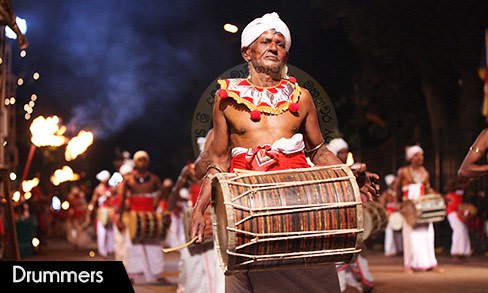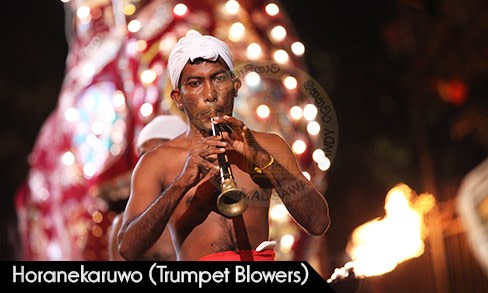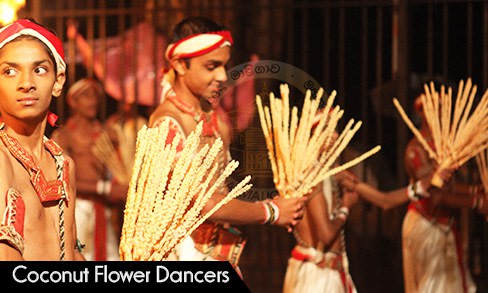
Esala is also considered to be the beginning of the raining season (Vassana) when the monks commence their Retreat. Also, this month is considered to be the period when ritual performances to the protective divinities are held, (eg Pattini puja) as recorded in the text ‘Pattini-Halla’.
Being considered a ‘chaste’ month, the period is held sacred for the availability of water, hence prosperity. Several records have been left behind by dignitaries and other visitors to the island such as Robert Knox, John Davy, etc. The description of the perahara. These accounts provide much evidence as to the constitution and organization of the present day perahara. Yet many features seem to have been added and some changed to suit the time and the available resources and conditions.Dalada procession and the social traditions are linked so much together; the month of Esala has been named as the procession month, because of the Esala feast. In the 18th century at the time of King Keerthi Sri Rajasinghe, the four Devala Peraharas and Dalada Perahara were amalgamated and were made series of Peraharas.
The procession is a complex procedure in which various customs are involved. The preliminary preparation for the perahara commences at the beginning of every year. Immediately after the Wesak and Poson pageants steps are taken to inform the owners of elephants the number of tuskers and elephant required measures of repair the dresses worn by the elephants and prepare new dress if required. Measures are taken to repair the required implements like oil torches etc and to fulfill the requirements to make the perahara a success. The astrologer attached to the Sacred Tooth (Nakath Mohottala) is required to prepare an auspicious time for the pageant to be inaugurated. Later a meeting of state official and delegates of voluntary associations with the patronage of the Mahasangha is summoned to discuss matters pertaining to services to be executed to make the perahara a glorious event.
Kumbal Perahera (Kumbal Procession)
The first procession of the Sacred Tooth Relic stars with the Kumbal Perhara. This is the first Kumbal Perhara shown to the infants to drive away Evil Spells and Illwill. It is a tradition that the procession parades the streets of Kandy for five days. But the Kumbal Perahara is popular and remains as an unfinished procession or a semi procession. The reason is that Nilames do not work in this procession. But the Drummers and Tuskers take part without any ceremonial costumes.
Randoli Perahera (Randoli Procession)
This could be seen only with the procession of the Sacred Tooth Relic and parade the streets for whole five days which is a tradition. In the days of the Kings the Chief Queen of the Kings paraded in this procession in Palanquins. As the participation of the Queens was not proper to the procession of the Sacred Tooth Relic they were stopped but a palanquin is taken in the procession as an honor to the Queen. Today it is taken as the last item of the procession.
Maha Randoli Perahera (Grand Randoli Procession)
The Maha Randoli Perahara is the last Procession. It is the grandest event of the festival. The Tuskers come with garlands and decorated with ceremonial costumes. The Diyawadana Nilame adds a novel glamour to the procession by wearing newly stitched costume.
SOME OF THE MAIN EVENTS IN PERAHARA.
The Permission
Until the sound of shots for the start of the procession is heard the tuskers, drummers, dancers and other artists are lined up. Permission for the start of the procession is granted by Diyawadana Nilame. All the officials Kariya Korala, Gajanayake, Kapuwas Vidanes, Kankanam Rala, Mohottala and Wattorurala greet the Diawadana Nilame and proceed. These traditions are carried out regularly
Sound of Shots in the Perhara
It is the custom to fire three rounds of shots before the commencement of the pageant. At the first sound, the processions of the four devalas line up and move to join the procession of the Maligawa. The Second sounds indicate that the casket is placed in the Ranhilige on the ceremonial tusker. The Third sound indicates that the pageant is set off.
Kasakaruwo (Whip Crackers)
When the procession parades the streets the first participants you see are the whip crackers. It is believed that the noise of the whips depicts thunder and lightning. There are thirty of them. They intimate the arrival of the King. Generally, they are used to make room for the Sacred Tooth Relic to be taken in the procession.
Buddhist Flags
To indicate that Kumbal Perahra and Randoli Perahahra are Buddhist rituals, Buddhist flags are taken in the procession. The youth clad in the white cloth carrying Buddhist flags and their solemn walk is a spiritual and pleasant sight. The cool breeze from the Kandy Lake and the colours of the Buddhist flags add glamor to the procession.
Provincial Flag Bearers
According to the traditions of Kandy era, the provincial flags are added to the procession and at that time Nilames in charge of provinces carry these flags. This tradition could be seen even today. First is the Sun and Moon flag of Sathara Koralaya, second the white flag of Matale, third the Silk flag of Sathara Koralaya,second the white flag of Matale, third the Silk flag of Sabaragamuwa, fourth the mythical bird of Thun Koralaya,the flag of the Peacock of Uva Walapane and the flag of the Lotus Flower of Uda Palatha taken in the Procession.
Sword Carriers
From the time, the Sacred Tooth Relic arrived in Sri Lanka and established in the temple it faced so many hostilities and hazards. However the swords which were raised to prevent these hostilities are remembered by the feature of these sword bearers in the procession. They walk with raised swords along the path of the procession of the Sacred Tooth Relic. They do not perform any dance but walk.
Fire Ball Dancers
The glow of lightning is magnificently shown by these Fire Ball Dancers. Turning of the Fire Balls is called ‘Pandampaliya’ which drives darkness of the night illuminating the procession.This Fire Ball Display is dangerous but with a balanced mind and body it is a simple exercise.
Peramune Rala (Front Runner)
Traditionally after the whip crackers come the Peramune Rala on a tusker with his set of documents of tall pots containing the religious activities of the procession of the Sacred Tooth Relic as well the duties with regard to the properties of the temple of the Sacred Tooth Relic. This set of documents should be taken with both of his hands.He wears a white costume and a triangular hat(Thuppottiya).
First Hewisi Group
They come behind the tusker with the Peramune Rala (Front Runner). They are the first four Hewisi Players of the Temple. Their Presence in the front of the procession is a tradition. They Perform with a majestic skill.
Gajanayake Nilame
He is in charge of the group of tuskers of the King. Symboling this Gajanayaka Nilame walks as if he is in charge of the Elephants and tuskers who walk as if he is in charge of all the Elephants and tuskers who walk in the procession. As a tradition Diyawadana Nilame hands over a Goad to Gajanayake Nilame. He carries this pointing it to the sky and walks majestically dressed in a colourful costume.
Drummers
These hereditary Drum Beaters beat their drums as a religious ritual to the Sacred Tooth Relic. The procession consists of a collection of several generations of Drum Beaters who play the tunes pertaining to their own tribe. A start of the beat, Welcoming beat, Walking beat, Walinada beat is performed. These professional musicians perform with great respect and honor.
Horanekaruwo (Trumpet Blowers)
Trumpet is a well-tuned instrument and is to be mastered. It has been popularized as the sound of Dalada Perahara. The tune Gajaga Wannama is well played right throughout the procession. Trumpet is made with skills pertaining to generations. It is an essential instrument of the Dalada Procession. White dress red cotton belts and shoulder are parts of the trumpet blower’s costumes and bare chests.
Coconut Flower Dancers
Coconut Flower is the symbol of prosperity. That is because they decorate the Punkalasa with Coconut flowers. The purpose of the Dalada Perahara is to wish prosperity to the country. To symbolize this, dancers carry coconut flowers in their hands. They perform a simple dance reciting verses changing the coconut flower from hand to hand.
Thammattamkaruwo (Thammattam Players)
The drum tied around the waist produces the rhythm by beating with the help of two sticks. The hands and feet are free for them to dance and play the drum easily. Their costumes are made of white and red cloth.
